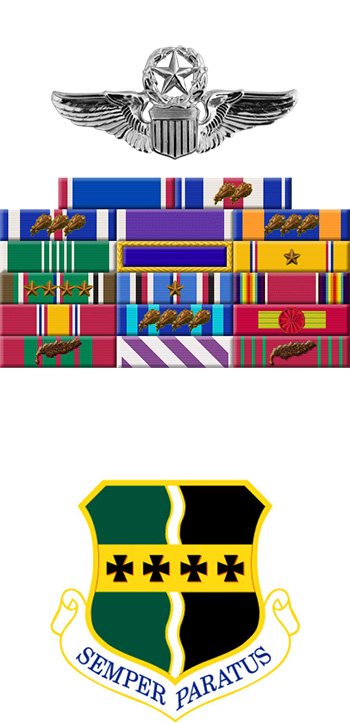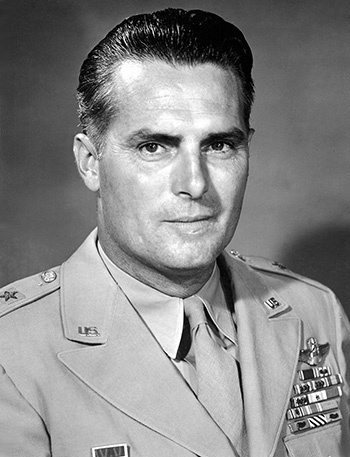
|
Robert F. Travis |
 |
|||
| Rank, Service | ||||
Brigadier General O-7, U.S. Air Force |
||||
| Veteran of: | ||||
|
||||
| Tribute: | ||||
Robert Travis was born on December 26, 1904, in Savannah, Georgia. He entered the U.S. Military Academy on July 1, 1924, and was commissioned a 2d Lt in the Field Artillery on June 9, 1928. Lt Travis transferred to the Army Air Corps in September 1928, and completed flight training and was awarded his pilot wings at Kelly Field, Texas, in September 1929. His first assignment was as a Field Artillery Officer and pilot with the 1st Observation Squadron at Mitchel Field, New York, from September 1929 to July 1932, and he then attended the Air Corps Engineering School at Wright Field, Ohio, from July 1932 to July 1933. Lt Travis next served as an Engineering and Operations Officer with the 59th Services Squadron at Langley Field, Virginia, from August 1933 to March 1935, and during this time he served as Engineering Inspector for the Army Eastern Zone of the Air Mail Service at Mitchel Field from February to May 1934. His next assignment was with the 49th Bomb Squadron at Langley Field from March 1935 to October 1937, followed by service as an Armament and Intelligence Officer with the 2nd Bomb Group at Langley from October 1937 to March 1939. Capt Travis served as a B-18 Bolo pilot and as Operations Officer with the 72nd Bomb Squadron at Hickam Field, Hawaii, from March to July 1939, and then served as Commander of the 72nd Bomb Squadron at Hickam from July 1939 to September 1940. His next assignment was as Material Officer for the 5th Bomb Group at Hickam from September 1940 to May 1941, followed by service as a B-17 Flying Fortress pilot and Commander of the 43rd Bomb Squadron at MacDill Field, Florida, from May to October 1941. Col Travis served as Executive Officer of the 29th Bomb Group at MacDill from October 1941 to March 1942, and then as Commander of the 29th Bomb Group at MacDill and then Gowen Field, Idaho, from March to August 1942. His next assignment was as Commander of the 15th Bomb Training Wing at Gowen Field and at Sioux City Army Air Base, Iowa, from September 1942 to July 1943, and then as Commander of 20th Bomber Command at El Paso, Texas, from July to August 1943. Gen Travis served as Commander of the 41st Combat Bomb Wing in England from September 1943 to October 1944, and then as Commander of the 17th Bomb Operational Training Wing at Grand Island Army Air Field, Nebraska, from November 1944 to August 1945. He next served as Commander of Sioux Falls Army Air Field, South Dakota, and of the 17th Bomb Training Wing at Sioux City from August 1945 to August 1946, followed by National War College at Fort McNair, Washington, D.C., from August 1946 to June 1947. His next assignment was as Chief of Staff of 7th Air Force at Hickam AFB from August 1947 to May 1948, and then as Commander of 7th Air Force at Hickam from May to September 1948. He served as Commanding General of Pacific Air Command at Hickam from September 1948 to June 1949, followed by service as Commander of the 9th Bomb Wing at Fairfield-Suisun AFB, California, from June 1949 to February 1950. His final assignment was as Commander of the 5th Strategic Reconnaissance Wing and the 9th Bomb Wing at Fairfield-Suisun AFB from February 1950 until he was killed in the crash of a B-29 Superfortress on August 5, 1950. Fairfield-Suisun AFB was renamed Travis AFB in his honor on April 20, 1951. Robert Travis was buried at Arlington National Cemetery. |
||||
|
||||

